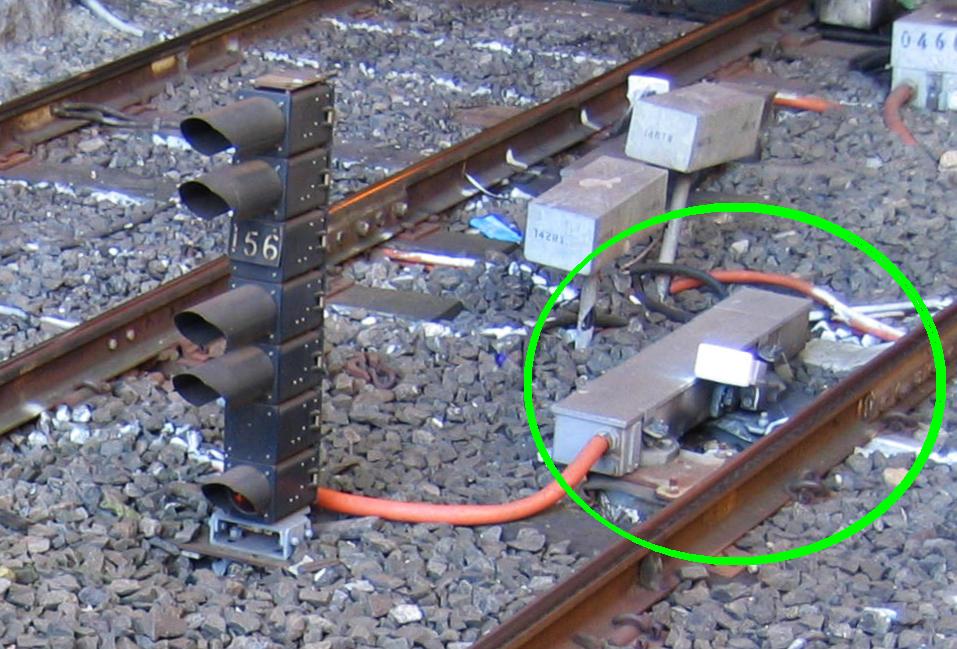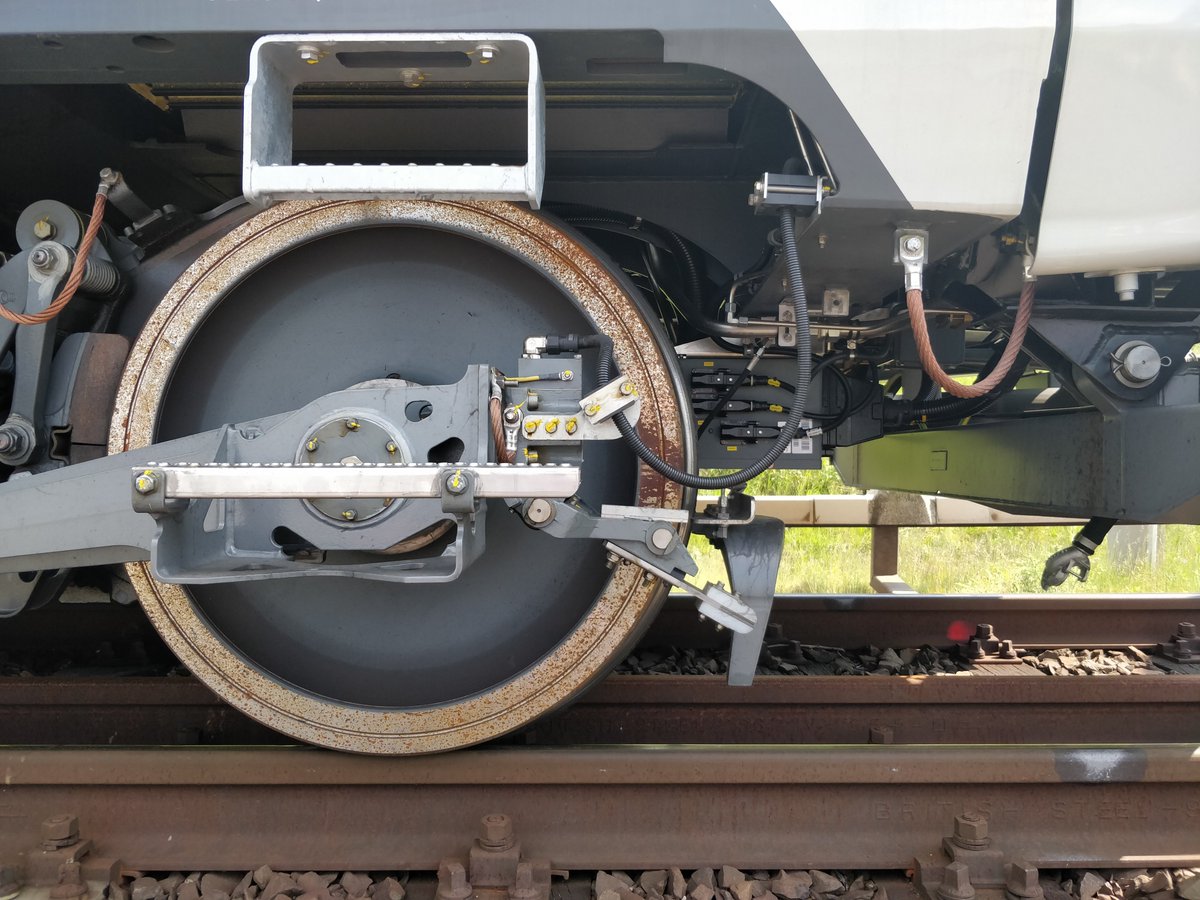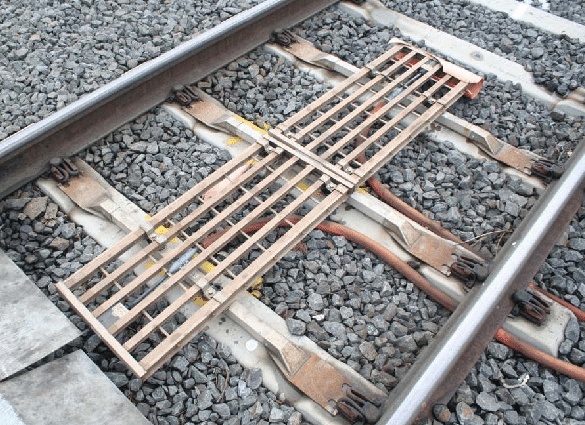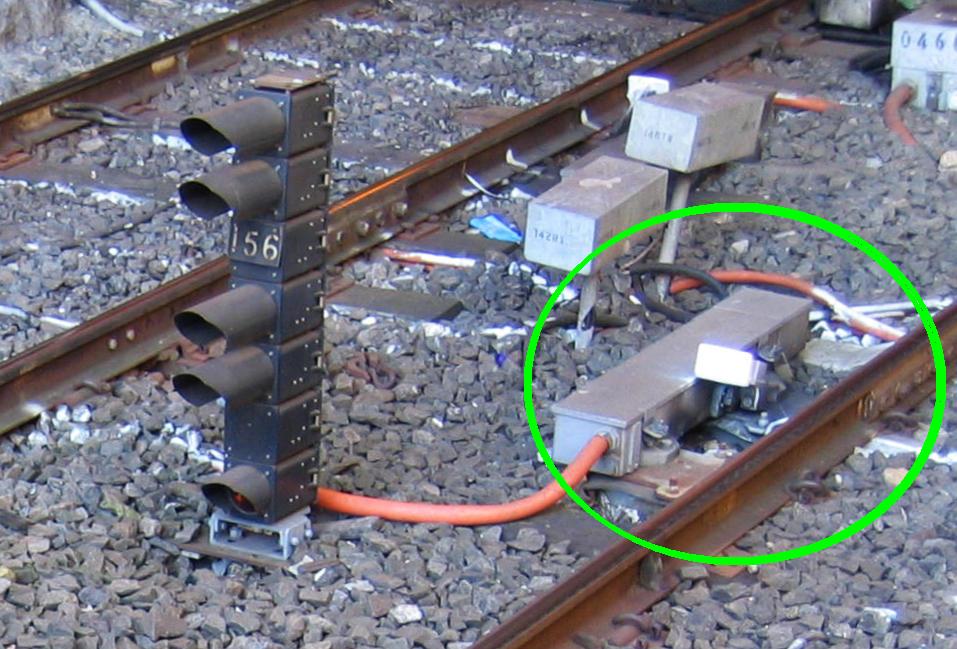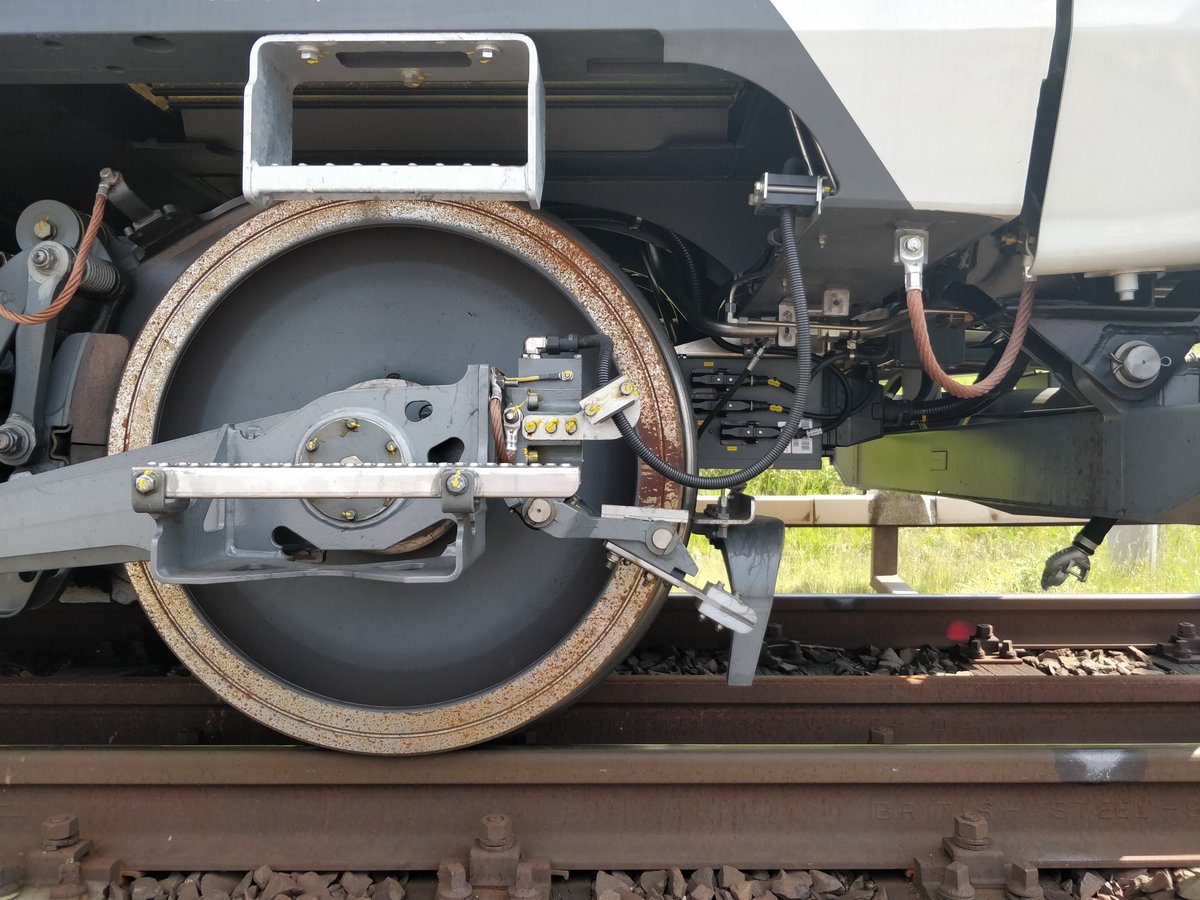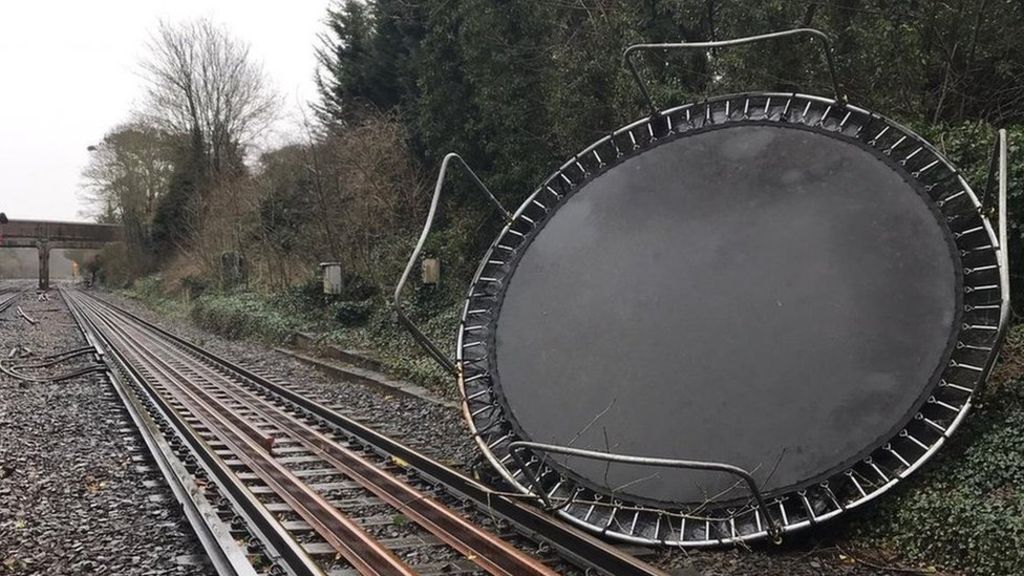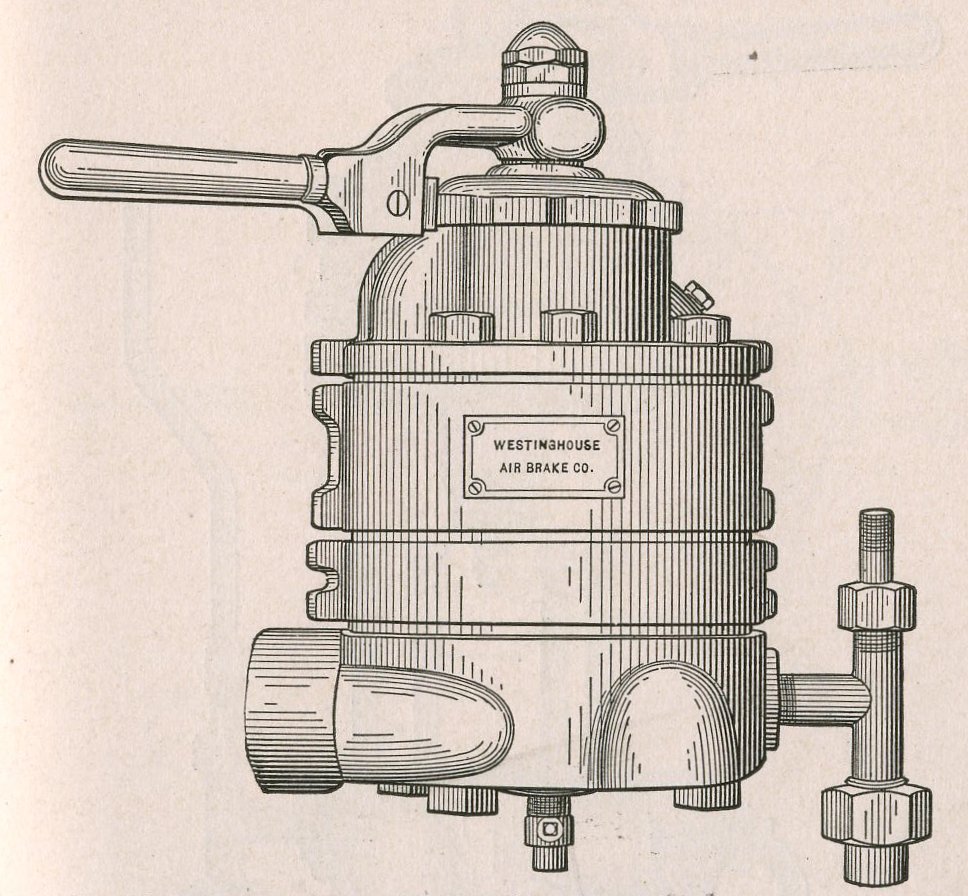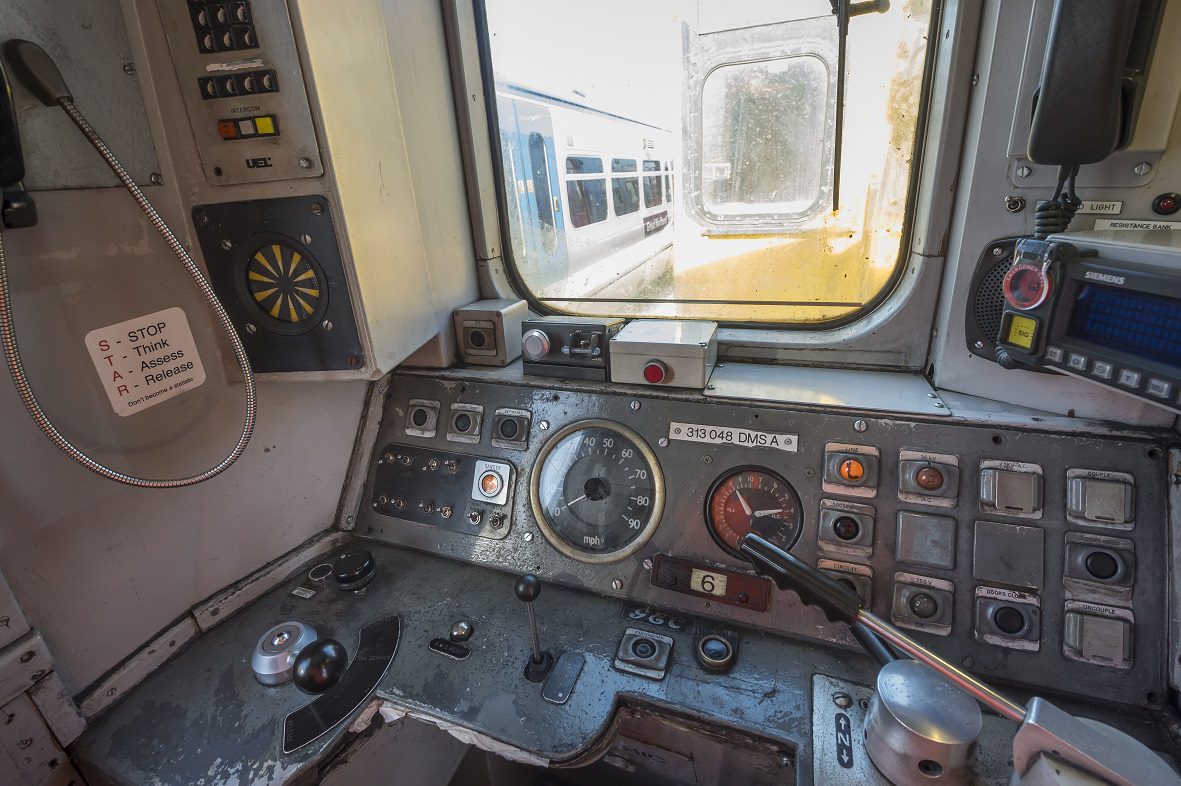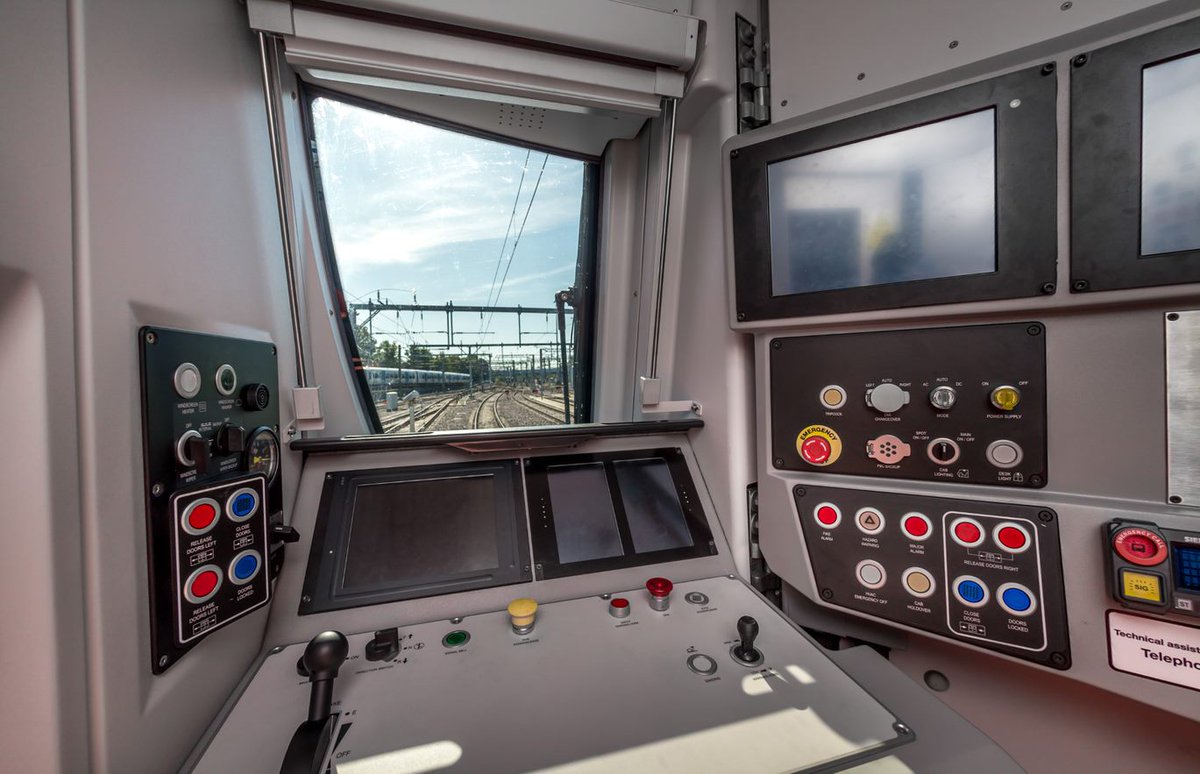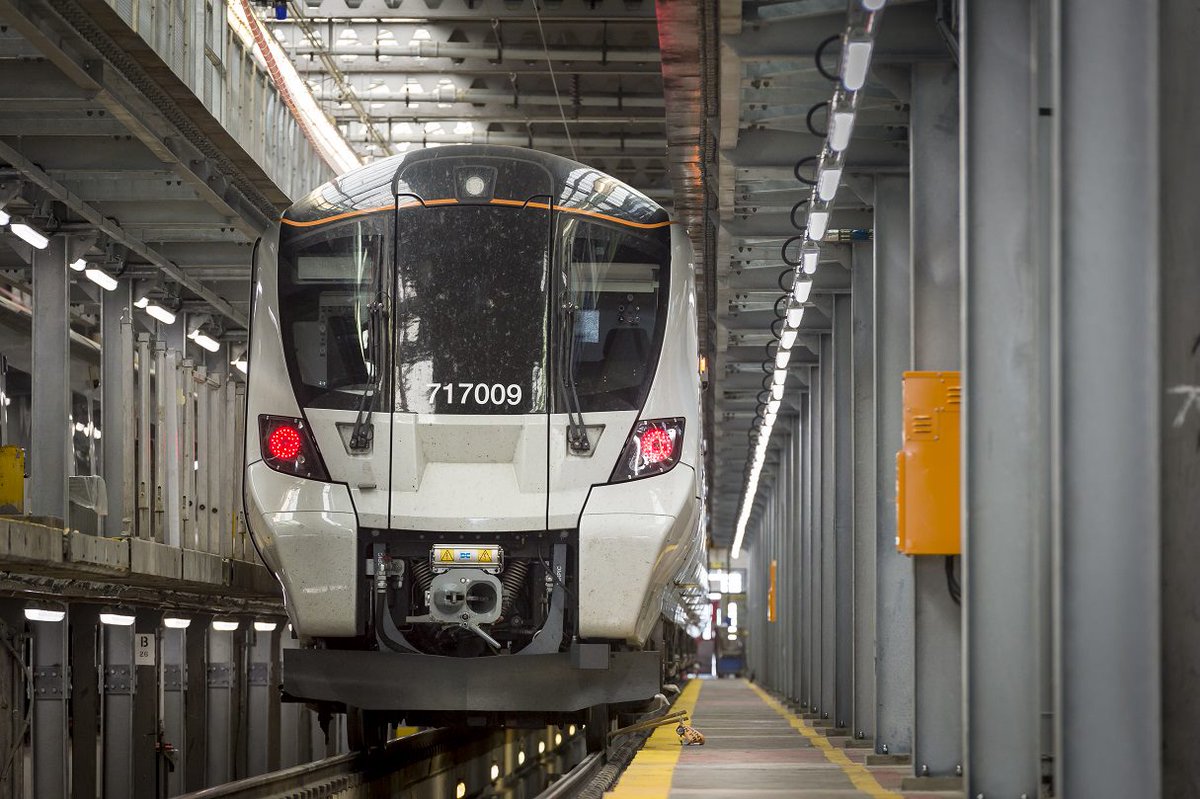Last week& #39;s tribute to the pure unbridled joy and glory of EUROBALISE demonstrated a love for obscure track-mounted boxes for #RailwaysExplained, so here& #39;s some more. What could be better than EUROBALISE you ask?
I& #39;ll tell you. The joy and wonderment of the @GNRailUK Metro, running between Finsbury Park and Moorgate, and operated by Class 717 trains, that& #39;s what. Why? One word, TRIPCOCK!
Now in the previous thread, there was a segue to the stretch of track between Finsbury Park and Moorgate (Northern City Line - NCL) and its pending upgrade to ETCS, but until that time arrives, time to talk about train stops and tripcocks https://twitter.com/PaulCodd/status/1244703004659515395">https://twitter.com/PaulCodd/...
First, some basics. Trains have a number of safety systems on-board. Other than the driver, perhaps one of the most important is the Train Protection Warning System (TPWS). Ooh look, yet another bit of track mounted kit!
TPWS involves a transmitter connected to the signalling system. Should a train pass a signal at danger where it is fitted, TPWS kicks in, initiating an emergency brake application.
Train stops and tripcocks is basically the same concept, yet just a little bit more, well, steampunk... Each signal is fitted with a trip arm mechanism, mounted on the ground adjacent to the rail, which consists of a spring-loaded arm connected to an motor.
The system is designed to be fail-safe. When the signalling system determines it is safe for the train to proceed, the motor drives the trip arm down to the lowered position. The spring ensures that the trip arm is raised in all other situations.
Each train is in turn fitted with a tripcock, literally a lever connected to the train& #39;s braking system and mounted near the leading wheel. A raised trip arm will strike the tripcock, causing the brakes to apply.
Shopping trollies and other trackside stuff can also potentially do the same, so remember, tie-down those trampolines, lest they claim victory in their eternal battle with the third rail!
Anyway, the reason the tripcock works is a train& #39;s brakes are also designed to be fail-safe (sensing a pattern here?). It& #39;s a system with its roots in 1869 (well, if it aint broke...).
Basically, the train& #39;s brakes are held off by air pressure. Lose the air pressure (e.g. power failure, or a tripcock hitting a trampoline...) and the brakes clamp on. Normal braking = reduce pressure, emergency braking? = vent the whole lot to atmosphere!
Air brakes also cause all kinds of confusion for those new to the railway and the always strange language of control reports. What exactly is this driver doing?
Trainstops and tripcocks is a London Underground system, reflecting both the NCL& #39;s past, and sadly, its tragic history. I believe it& #39;s the only mainline use of the system in the UK.
As you can imagine, that results in a moderate amount of drama for the @GNRailUK Metro. Each 717 must check its tripcock is operating before it heads down to Moorgate from Finsbury Park, and then change power source at Drayton Park from overhead to third rail for bonus points.
Also, for double bonus points, ETCS was originally expected to arrive at the same time as the new 717 trains. To have been in the room with the engineers working out how to combine digital train + tripcock  https://abs.twimg.com/emoji/v2/... draggable="false" alt="👇" title="Down pointing backhand index" aria-label="Emoji: Down pointing backhand index">
https://abs.twimg.com/emoji/v2/... draggable="false" alt="👇" title="Down pointing backhand index" aria-label="Emoji: Down pointing backhand index"> https://abs.twimg.com/emoji/v2/... draggable="false" alt="👇" title="Down pointing backhand index" aria-label="Emoji: Down pointing backhand index">
https://abs.twimg.com/emoji/v2/... draggable="false" alt="👇" title="Down pointing backhand index" aria-label="Emoji: Down pointing backhand index">
One day, trainstops and tripcocks will be no more on the NCL, but until that day, and once the lockdown is over, keep on trippin& #39; (but ideally, not tripcock tripping...)

 Read on Twitter
Read on Twitter